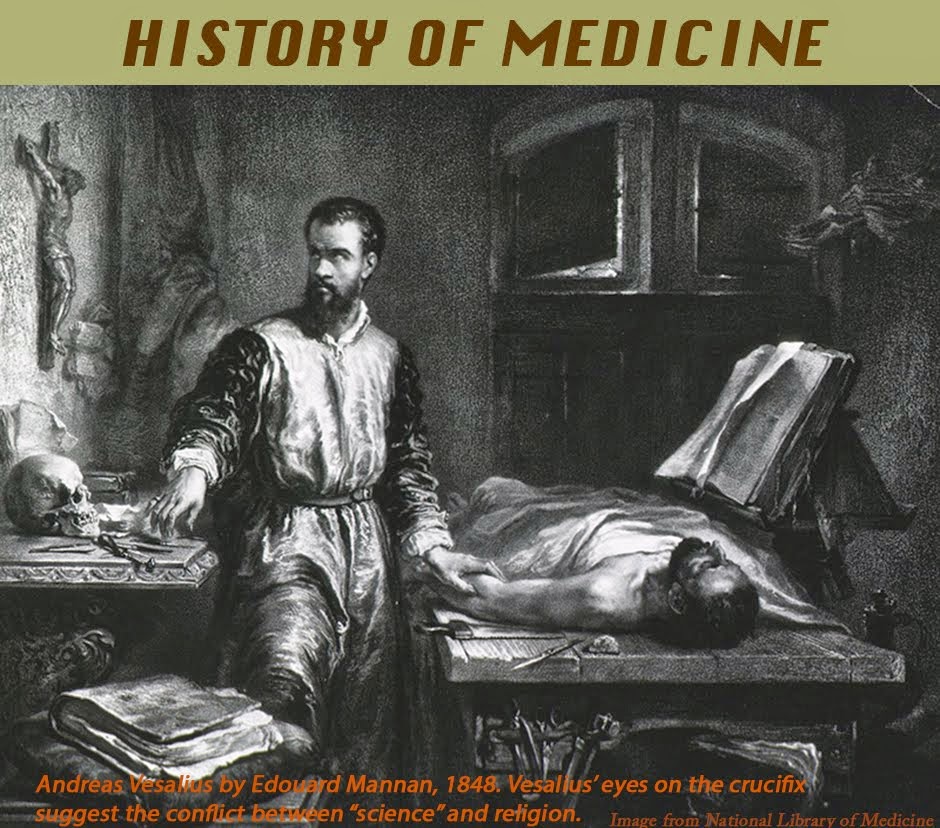MESMER AND ANIMAL MAGNETISM
In 1778 a German doctor, Franz Anton Mesmer, educated at the University of Vienna Medical School, left his practice in Vienna after being shunned by a hostile medical faculty. His work as a healer using a new therapy, animal magnetism, based on an invisible fluid that permeated the universe and whose passage through the body was
essential for good health, was considered chicanery by the academic community. Chased also by rumors of inappropriate sexual behavior, he moved to Paris and opened a new practice in a fashionable area.
 |
| F. Anton Mesmer (Wikipedia) |
Animal magnetism did not sound outlandish to many French Enlightenment Parisians. Writings by Voltaire on Isaac Newton’s gravity, describing it as the effects of an invisible “fluid”, pervading the universe, were popular. Similar was electricity, another
mysterious fluid with a variety of uses, including treatment of illness. Magnetic attraction resembled gravity, and phlogiston, an invisible substance responsible for heat, still permeated scientific thought. Balloons filled with “dephlogisticated air” (hydrogen) ascended to extraordinary heights. Theories of immaterial “vitalistic” forces abounded in medical writing. Mesmer’s technique of restoring patients to health by aiding the flow of magnetic fluid through the body sounded quite reasonable to many.
 |
| Voltaire at work (Wellcome Library) |
For official recognition of his method Mesmer appealed to the French Academy of Sciences, the Royal Society of Medicine, and the Paris Faculty of Medicine. All refused to endorse him. Charles Deslon, however, a Paris Faculty member and physician to the brother of Louis VI (who later ruled France as Charles X), became a believer and adopted Mesmer’s techniques.
The demand for treatment was high, forcing Mesmer to conduct group therapy sessions. Patients were seated around a central tub, about a foot high, partly filled with glass and iron filings and covered in wood. Ropes around the patients’ waists transmitted the fluid from one to another, as did the linking of hands. Iron bars protruded from the barrel, angled to touch parts of the body to receive the magnetic fluid. Attendants also touched various parts needing treatment with iron rods or pressed with their hands on the upper abdomen (and sometimes the lower part) to impart more fluid.
In individual sessions the therapist sat with his knees touching the patient’s as he pressed on various parts of the abdomen. The light was dimmed and a musical instrument, usually a glass armonica, invented by Benjamin Franklin,
produced soft, ethereal sounds. Mirrors around the room reflected back any escaping magnetic fluid. Before long subjects began trembling or shouting and progressed to seizures and other movements. Those with the most violent movements were moved to a room with padded walls. Inducing such a “crisis” was thought important to a cure.
 |
| Patients around the barrel. No ropes in this image. Attendant on left pressing on abdomen. Notice mirrors. (Wellcome Library) |
 |
| Glass harmonica. Rubbing the fingers on the edges of the rotating wet glass discs produces the notes (Wikipedia) |
After the report Mesmer’s influence waned. As the revolution approached, he traveled to Switzerland and Germany, partly to visit family, and ended his days in obscurity.
 |
| Antoine Lavoisier and his wife (Wikipedia) |
The ensuing revolution in 1789 changed France and French medicine forever. Both Lavoisier and Bailly perished under the guillotine. Dr. Guillotin was imprisoned but eventually released. The Marquis de Lafayette, another devotee, tried to introduce mesmerism to the U.S. but Thomas Jefferson opposed it and it never grew deep roots. The term “mesmerized” took on a milder connotation. Mesmer’s work, however, was a step toward the eventual recognition of the subconscious.
SOURCES:
Darnton, Robert. Mesmerism and the End of the Enlightenment in France. 1968; Harvard Univ Press.
Buranelli, Vincent. The Wizard from Vienna. 1975; Coward, McCann & Geoghegan.
Animal Magnetism: Report of Dr. Franklin and Other Commissioners (English Translation) 1837; H. Perkins, Philadelphia.
Huth, E J. “Benjamin Franklin’s Place in the History of Medicine”. 2006; James Lind Library Bulletin, available at: https://www.jameslindlibrary.org/articles/benjamin-franklins-1706-1790-place-in-the-history-of-medicine/
The International Journal of Clinical and Experimental Hypnosis, v 50 (4), 2002, devoted the entire issue to Franklin and Mesmer.
Lopez, C. “Franklin and Mesmer: An Encounter”. 1993; Yale J Biol Med 66: 325-31.



